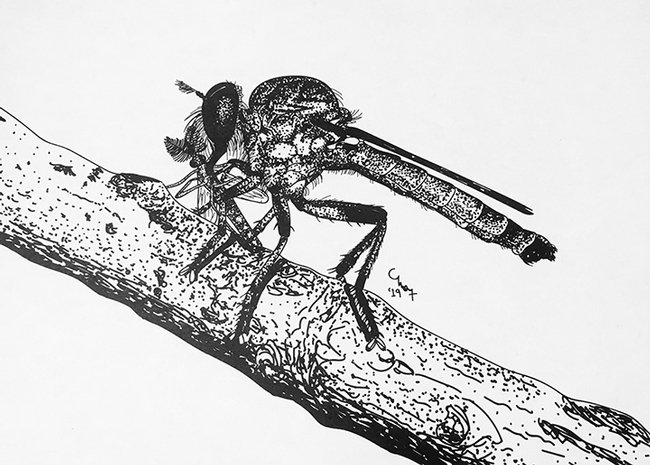- Author: Kathy Keatley Garvey
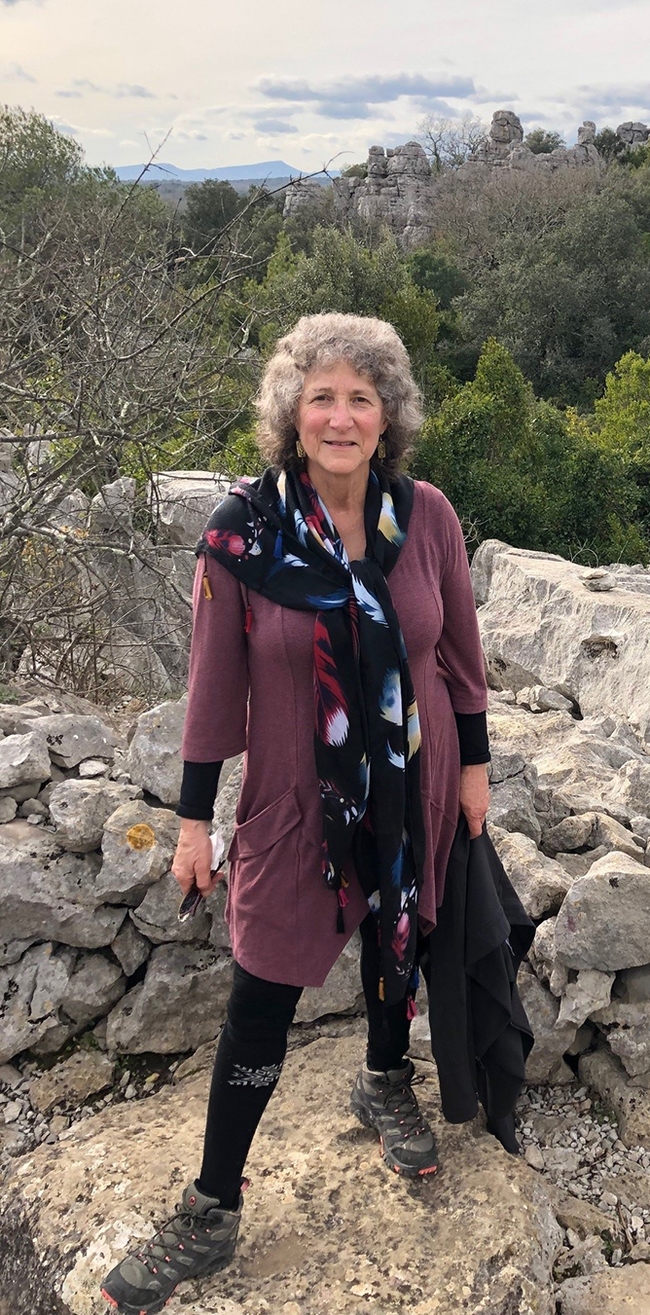
It did: their research revealed how TSWV (family Tospoviridae, order Bunyavirales) packages its RNA genome, a crucial step in virus infection.
Their newly published research, “The Genome of a Bunyavirus Cannot be Defined at the Level of the Viral Particle But Only at the Scale of the Viral Population,” appears in the current edition of the Proceedings of the National Academy of Sciences (PNAS).
The 18-member research team included scientists primarily from the French National Research Institute for Agriculture, Food and Environment (INRAE) at the Campus International de Baillarguet, Montpellier; Department of Entomology, University of Wisconsin; and the Department of Entomology and Nematology, University of California, Davis.
“Our work showed the genome of TSWV can only be defined at the population level, pointing at emerging properties when viral particles infect plants in groups,” said a key author Stéphane Blanc, research director of INRAE's Biology and Genetics of Plant-Pathogen Interactions. “As most virions contain an incomplete genome, TSWV is a multi-component viral system, where co-infection and complementation are key in the life cycle. These findings open a myriad of possibly distinct properties depending on the genetic composition of the group of virions co-infecting a cell.”
“The most challenging part of this work was to create a protocol reliably quantifying the two polarities of each segment,” said lead author Michel Yvon of INRAE. “The next important advance will be to demonstrate that co-infection of cells by a group of particles is key to the spread of infection.”
Ullman, an international authority on orthotospoviruses and one of the four main authors, took a sabbatical to work on the project. “My interest was in understanding how TSWV packaged its RNA genome,” she said. “While this sounds like a simple goal, it is quite complex because TSWV has negative sense and ambisense viral strands and many research tools common to studying other viruses, such as infectious clones were not available.”
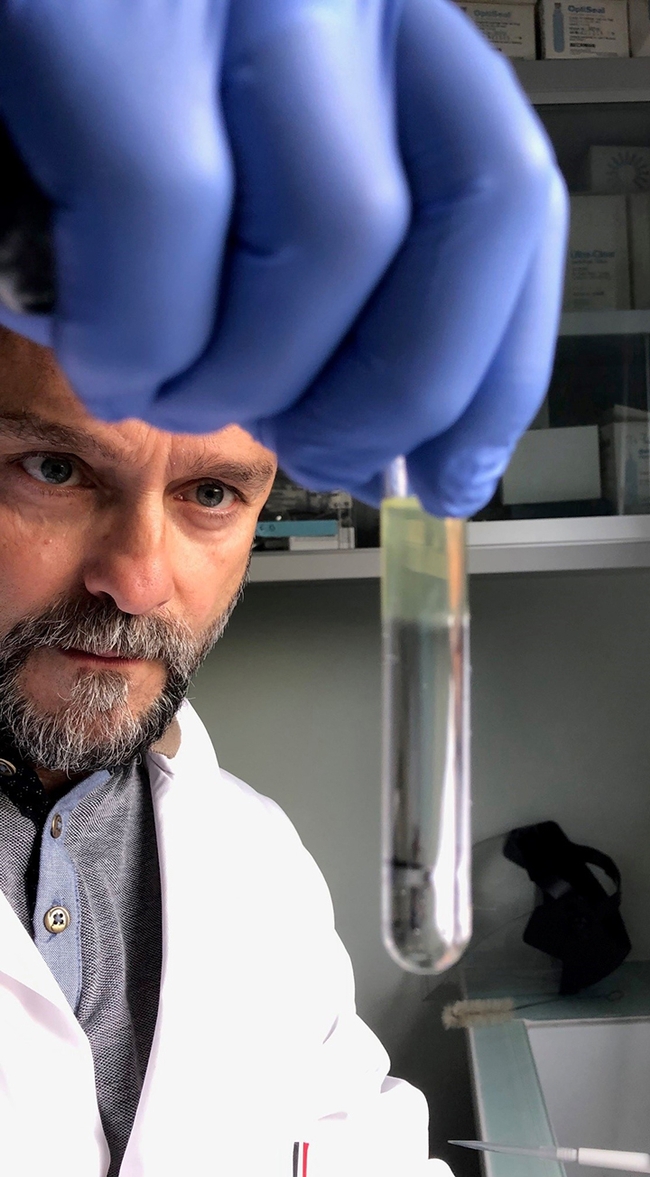
“It was a delight to work with the fantastic team of scientists that Stéphane assembled, all very talented with skills in virology, cryoelectron microscopy and nanopore PCR,” Ullman commented. “I cannot imagine a more talented and diverse group of people to conduct this difficult work. I learned a great deal about virus purification from Michel Yvon, whose leadership, skills in virology, and patient teaching really moved our project forward."
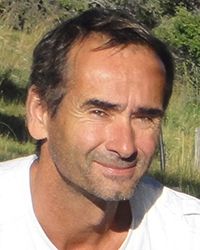
German, professor emeritus and former chair of both the Departments of Plant Pathology and Entomology at the University of Wisconsin, died Aug. 27, 2023 at age 82.
“I am indebted to my husband, Jean-Marc Leininger who frequently drove me to the laboratory in Avignon where I was able to rear thousands of virus-infected plants and to store TSWV isolate,” Ullman added. “Jean-Marc not only transported me and my virus specimens, but also learned to mechanically inoculate plants and helped with every inoculation and virus harvest.”
UC Davis postdoctoral scholar Sulley Ben-Mahmoud of the Ullman lab was among the co-authors.
Funding was provided by grants from Montpellier University of Excellence (MUSE); Floriculture and Nursery Research Initiative, U.S. Department of Agriculture, Agricultural Research Service (USDA-ARS); and the Fulbright Scholar Program. The authors also acknowledged support from
- Santé des Plantes et Environnementor Plant Health and Environment (SPE)
- Centre National de la Recherche Scientifique (CNRS)
- Institute of Research for Development (IRD)
- Institut national de la santé et de la recherche médicale (INSERM)
- Centre for International Cooperation in Agronomic Research for Development (CIRAD)
- Plant Health Institute of Montpelier (PHIM)
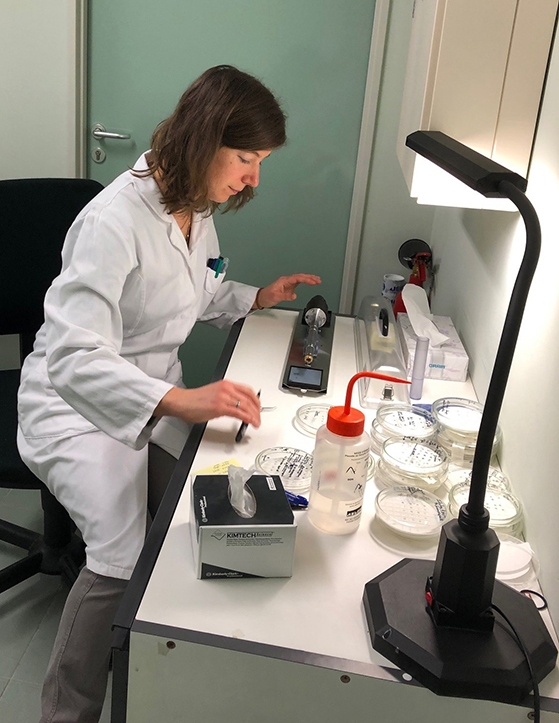
Ullman noted the importance of the research in her Fulbright application: “Sustainable management of insect-transmitted pathogens is a key concern for food production in France and the United States. Both countries grow many of the same crops and growers face similar challenges from insect-transmitted plant viruses. Current management strategies rely heavily on pesticides that may cause significant health and environmental concerns, including damage to bees and other pollinators, as shown with neonicotinoid pesticides. Clearly, better knowledge about these insect-transmitted viral systems…has potential to reduce pesticide use by providing novel and innovative technologies to manage orthotospoviruses and thrips in France and the United States.”
Ullman, a former chair of the Department of Entomology and a former associate dean of the UC Davis College of Agricultural and Environmental Sciences, anticipates strong research relationships between UC Davis and Montpellier that will lead to grant applications for international research and scholarly exchange opportunities for scientists, students, and post-doctoral scholars.
Significance
In their significance statement, the authors wrote: “Bunyaviruses infect animals, plants, fungi, and protists. Despite their importance, fundamental aspects of their biology as basic as the definition of their genome remain elusive. The viral genome consists of several negative or ambisense RNA segments, and virions often miss segments and/or package complementary strands. We formally quantify this heterogeneity on the species Tomato spotted wilt orthotospovirus. Within individual virus particles, the number, the identity, and the polarity of the segments are widely variable. In contrast, we show that a stable genetic composition is an emerging property of the viral population, each of the RNA segments/polarities accumulating reproducibly at a specific frequency. This resembles the genome formula of multipartite viruses, suggesting that bunyaviruses may also function as multicomponent viral systems.”
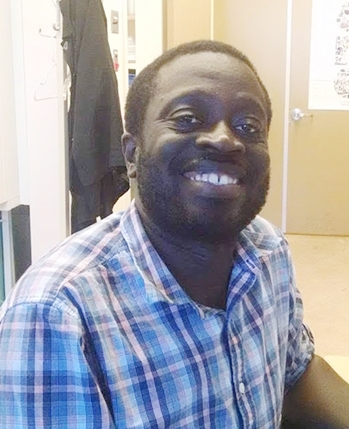
Their abstract: “Bunyaviruses are enveloped negative or ambisense single-stranded RNA viruses with a genome divided into several segments. The canonical view depicts each viral particle packaging one copy of each genomic segment in one polarity named the viral strand. Several opposing observations revealed nonequal ratios of the segments, uneven number of segments per virion, and even packaging of viral complementary strands. Unfortunately, these observations result from studies often addressing other questions, on distinct viral species, and not using accurate quantitative methods. Hence, what RNA segments and strands are packaged as the genome of any bunyavirus remains largely ambiguous. We addressed this issue by first investigating the virion size distribution and RNA content in populations of the tomato spotted wilt virus (TSWV) using microscopy and tomography. These revealed heterogeneity in viral particle volume and amount of RNA content, with a surprising lack of correlation between the two. Then, the ratios of all genomic segments and strands were established using RNA sequencing and qRT-PCR. Within virions, both plus and minus strands (but no mRNA) are packaged for each of the three L, M, and S segments, in reproducible nonequimolar proportions determined by those in total cell extracts. These results show that virions differ in their genomic content but together build up a highly reproducible genetic composition of the viral population. This resembles the genome formula described for multipartite viruses, with which some species of the order Bunyavirales may share some aspects of the way of life, particularly emerging properties at a supravirion scale.”
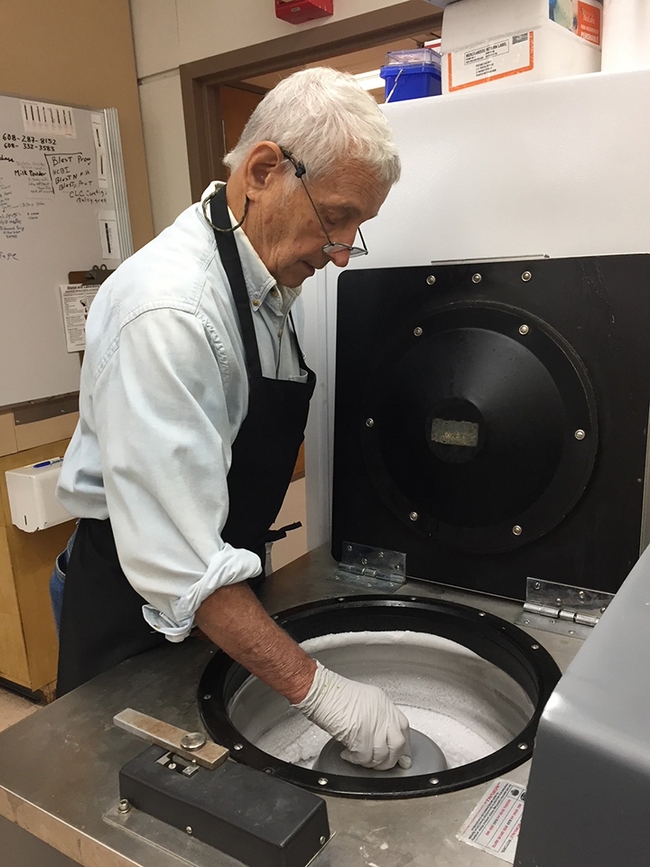
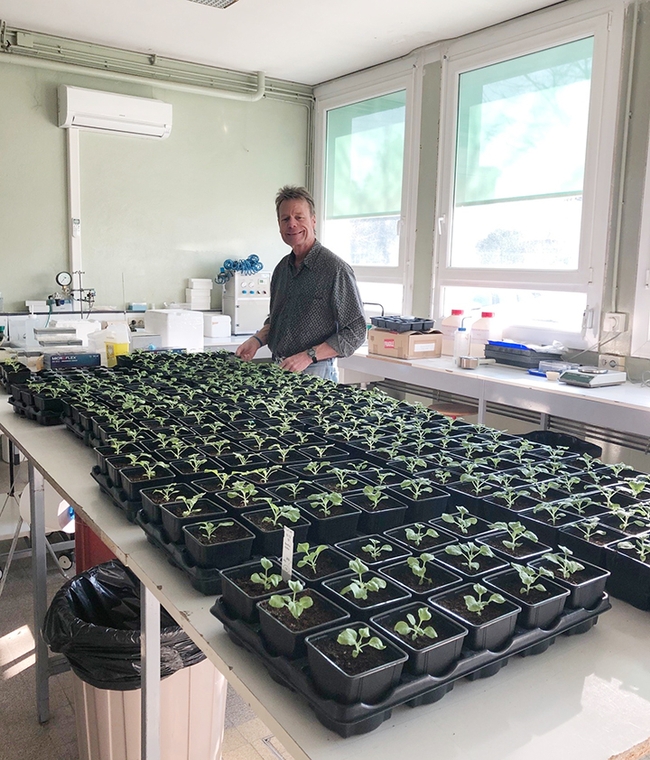
- Author: Kathy Keatley Garvey
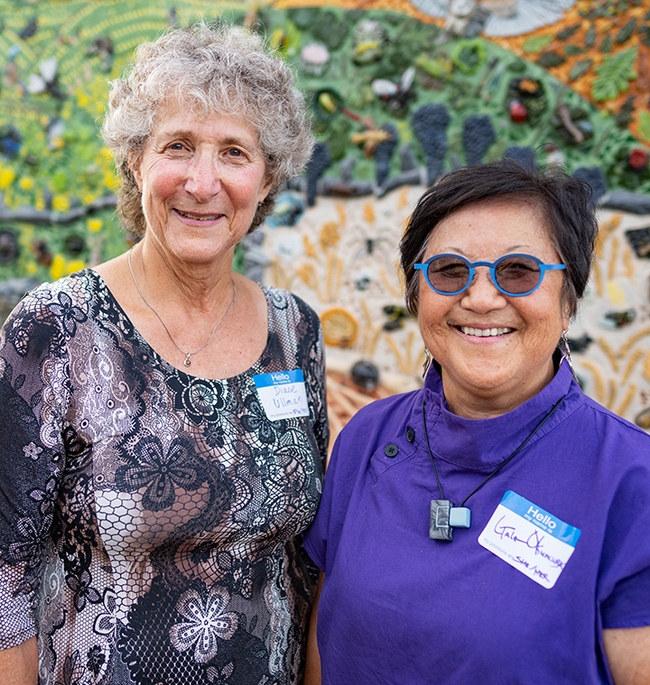
The 10 x 6-foot mural, which graces an outer wall of the Matthiasson Winery on Dry Creek Road, Napa, depicts more than 80 arthropods (insects, spiders and centipedes), several bird species, mammals (bobcat, deer, rabbits, squirrels, a pocket gopher), a gopher snake, mycorrhizal fungi and even earthworms, according to the three project leaders, UC Davis distinguished professor Diane Ullman and assistant professor Emily Meineke, both of the Department of Entomology and Nematology, and retired lecturer Gale Okumura of the Department of Design.
The project is the culmination of a spring quarter class, Entomology 001, “Art, Science and the World of Insects,” taught by Professors Ullman and Meineke. Ullman, founding co-director of the UC Davis Art/Science Fusion Program, described the project as “a collaboration between students and instructors in ENT 001; community members from Davis, Woodland, and Napa, and Matthiasson Winery; and the UC Davis Art/Science Fusion Program."
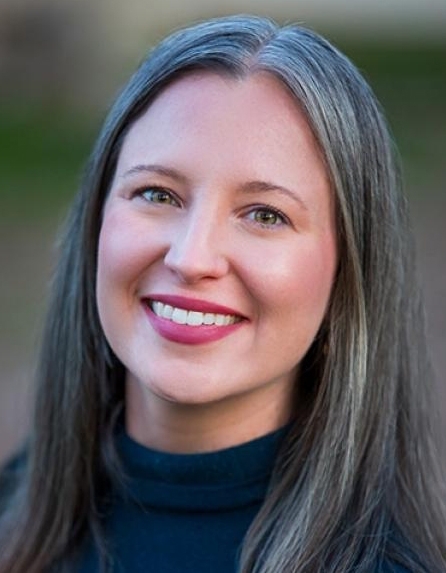
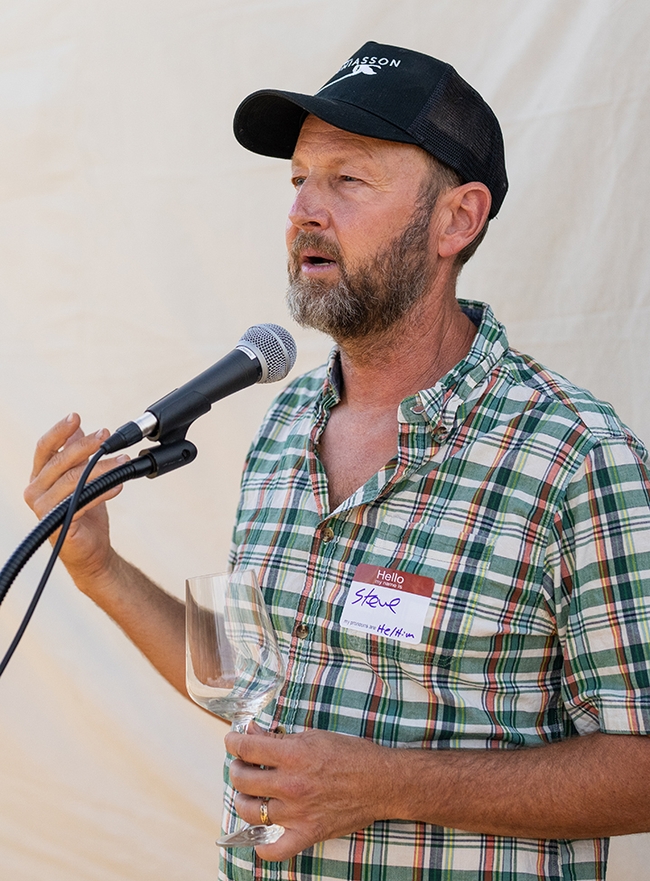
Praising the Arts/Science Fusion Program, the chancellor said the program "helps advance some of UC Davis' key goals, which are outlined in the university's 10-year strategic plan, titled 'To Boldly Go.' That first goal is to provide an educational experience that prepares all our students to address the needs and challenges of a diverse and changing world. The type of course that produced this mural helps advance this goal, by connecting art and science to enhance student learning in a truly innovative way. Another key goal is for UC Davis to be a role model for diversity. This program's strategy for teaching always includes community engagement, which attracts diverse students and fosters inclusivity through hands-on learning and collaborative teamwork. I also appreciate how the Arts/Science Fusion Program fosters community engagement."

Ullman noted that the general education class, "Art, Science and the World of Insects," was founded in 1996. It's been taught ever year since, "attracting students from every major offered on the UC Davis campus," she said.
The course--"taught with the notion that patterns, harmonies, symbols, and perceptions are shared across borders and disciplines--creates accessibility and inclusion for people that would otherwise fear science, or fear art," Ullman told the crowd. "Not only does this paradigm provide a new and innovative classroom learning experience, it creates collaborations between different kinds of students and the community."
The concept of an art/science paradigm "opened the door for students and community members to interpret the scientific endeavors of the campus and science of entomology," said Ullman, praising the College of Agricultural and Environmental Sciences "that supports this innovative method of teaching and extending knowledge to the public."
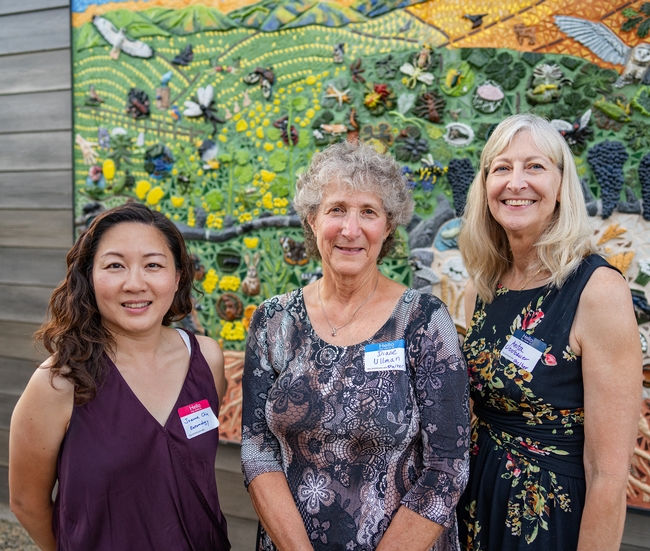
After advancing from research to a primary design, "the next step was to translate our research into visual narratives using design principles we learned from Gale," Ullman said. "With our designs in hand, the process of fabricating the artwork from clay began. Clay is a rich material with great memory, coming from the earth near Davis. In our classroom, every piece is used, recycled and carried forward."
"Once all the pieces of have been sculpted, glazed and fired in a kiln, assembly of the mosaic begins," Ullman related. "Everyone, students and community members contributed to assembly and grouting of the mosaic—truly a mosaic of human intention, creativity and will. We mixed our own grout and each color is custom designed after experimentation and consideration. Most artists would ask for 6 months to a year to complete a project of this size and scope. We completed the process in a mere 10 weeks, the scope of a quarter at UC Davis."
Ullman said that the 83 UC Davis students involved in the project "worked hard, learned about entomology, and the interactions between insects and people."
Meineke, an urban landscape entomologist, was unable to attend the Aug. 16th unveiling. Meineke and her husband Joe Kwon just "brought our newest Aggie, Genevieve Se Hwa Kwon into the world," Ullman told the gathering.
In a joint statement, Ullman and Meineke related that The Secret Life of Vineyards was designed to reflect the ecosystem within and around an organic vineyards as it progresses from early spring to harvest. A Cabernet Sauvignon vine is the centerpiece of the mural, shown from the first bud in the spring to harvest time in the autumn...The work is an ode to the importance of biodiversity and balance in the ecosystem in which wine vines are grown and reflects the passion of the Matthiasson Winery for sustainable viticulture.”
The professors credited artist Amanda Larson of Half Moon Bay "with the engineering and building of the hanging system, as well as the installation."
Resources:
- UC Davis Mural to Be Unveiled, news story, published Aug. 8, 2023, on the UC Davis Department of Entomology and Nematology website
- PowerPoint detailing the project from start to finish. This includes artist statements.
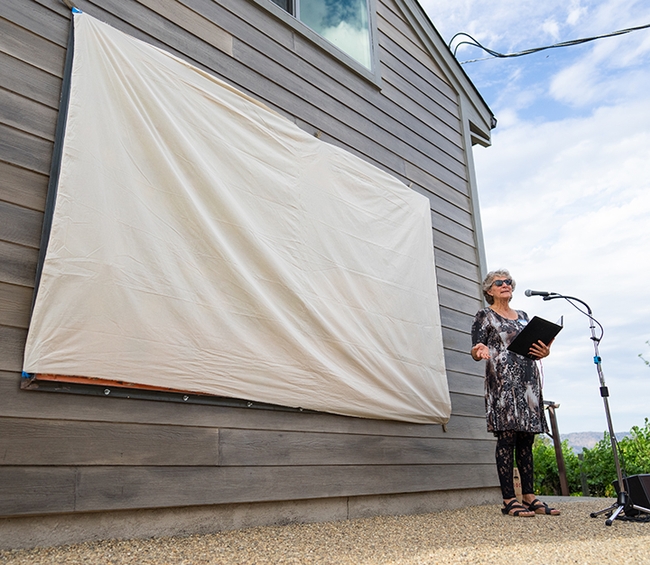

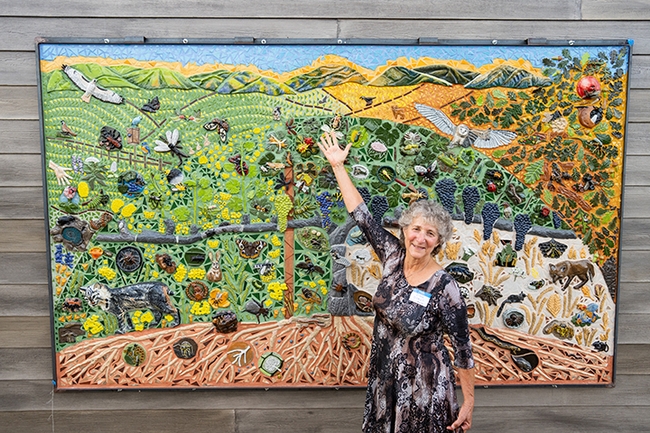
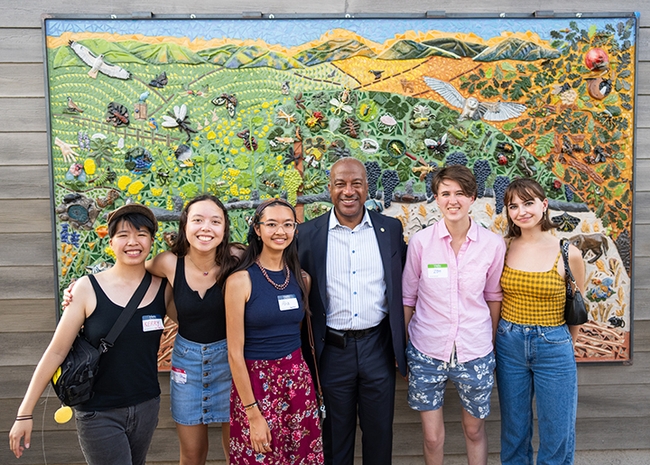
- Author: Kathy Keatley Garvey
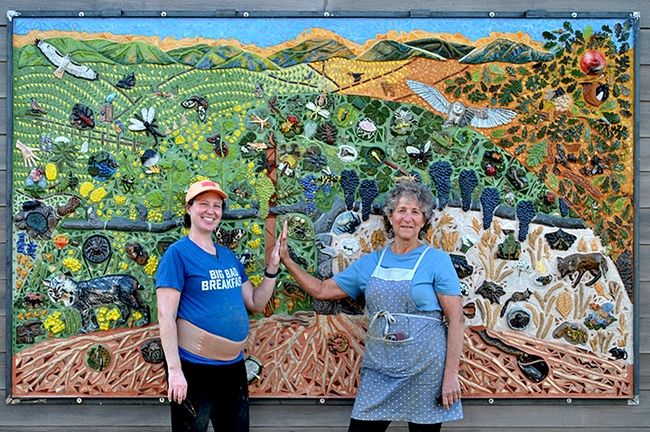
The large-scale mural, spearheaded by two faculty members/artists in the Department of Entomology and Nematology, and an artist/retired lecturer in the Department of Design, will be unveiled at an invitational celebration and unveiling on Wednesday, Aug. 16 at the Napa winery.
That's when “creators, artists, students, and volunteers will see the results of their hard, fun, and educational work creating the incredibly detailed tile mosaic mural depicting The Secret Life of Vineyards,” announced Jesse Galvan, director of hospitality for Matthiasson Wines. Special guests expected to attend include UC Davis Chancellor Gary May.
The project, fusing art with science, showcases the diversity of life in an organic vineyard ecosystem. Designing and directing the project were:
- Distinguished professor Diane Ullman of the Department of Entomology and Nematology, who researches insect/virus/plant interactions and insect-transmitted plant pathogens
- Assistant professor Emily Meineke, an urban landscape entomologist, Department of Entomology and Nematology, who studies plant-herbivore relationships
- Professional graphic designer and retired lecturer Gale Okumura of the Department of Design, known for her design solutions in visual communications.

Said Ullman: “This project allowed students in ENT 001 to learn the intricacies of the ecosystem in organic vineyards, and the importance of insects within it. Each student conducted their own research, learned design principles, and designed and created a piece of the mural. Along the way, they learned to collaborate with their classmates and volunteers from the community to produce a large scale, public artwork that communicates the ecology of the vineyard environment.”
“Students had the opportunity to hear about integrated pest management from Steve Matthiasson, and to consider the role of insects as pests and as natural enemies, in the context of all the other life in the vineyard,” Ullman said. “What a great experience! Emily Meineke and I are incredibly grateful to our partner in design and fabrication of the mural, Gale Okumura, a retired lecturer from the Department of Design, and the many community members and volunteers who helped make this mural possible. The installation is unusual in that the mural is mounted inside a frame that is attached to wall, rather than being attached directly to the wall. The engineering and building of this system, as well as the installation, was done by artist Amanda Larson of Half Moon Bay. Amanda has Davis connections as she grew up here and has a master's degree from California College of the Arts in San Francisco. We were delighted to be given this opportunity by the Matthiassons. The mural really celebrates their commitment to biodiversity and sustainability in viticulture.”
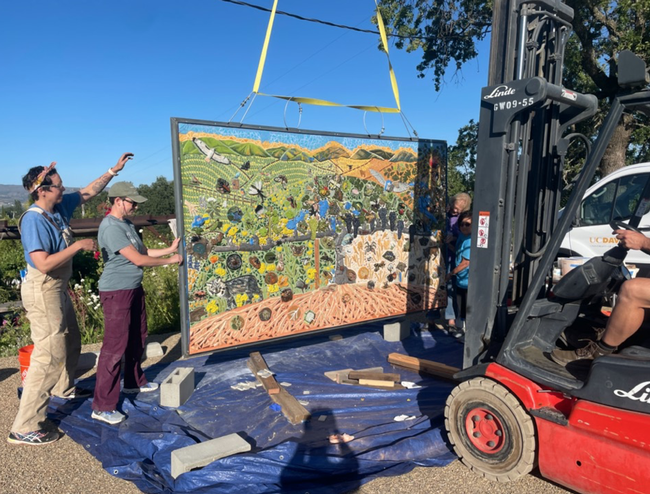
Said Meineke: "This visual representation aims to raise awareness of a world that often goes unnoticed but is essential for maintaining the overall health of these vibrant ecosystems."
The mural, installed in June and July on an outer wall of the Matthiasson Winery Building and Tasting Area, measures 10 feet wide by six feet in height, and weighs an estimated 600 to 800 pounds. The crew packed the assembled panels "with lots of padding in an electric van from UC Davis Fleet Services and transported them to the Matthiasson Winery," Ullman said. "Each of the four panels weighed between 125 and 200 pounds."
The insects on the mural range from beneficial insects to notorious pests. They include lady beetles that feast on aphids, and the glassy-winged sharpshooters that feed on plant fluids.
The directors created a PowerPoint detailing the progression of the art work and the artists' descriptions. They include:
Harrison Ford Spider. Nicholas Nguyen a civil engineering major, depicted the Harrison Ford spider, Calponia harrisonfordi, describedby arachnologist Norman Platnick of the American Museum of Natural History in 1993. “In real life, the spider is only around 5 millimeters and much of its biology and physiology is unknown, though it's thought to eat other spiders,” Nguyen wrote. “For the design, I incorporated Indiana Jones' hat as an homage to one of Harrison Ford's most well-known roles. The hat is subdued under the roots as if a farmhand accidentally left it there after a break out of the sun or if Indy transformed into the spider of his actor's namesake.”
“C. harrisonfordi is the quintessential example of legacy,” Nguyen added. “The spider legacy of an archaeologist, blade runner, space smuggler and also environmentalist, activist, actor and ultimately hero, Harrison Ford.”
American Dog Tick. Max Samuelsen, then a fourth-year biopsychology major with a “love for nature and the outdoors,” created the American dog tick, Dermacentor occidentalis. This arachnid significantly impacts vineyard ecosystem balance, serving as a food source for certain species, and indirectly aiding in pest control by feeding on and transmitting diseases to certain pest species, such as rodents. For humans, it is a vector for diseases like Rocky Mountain spotted fever, and a research subject for understanding vector-borne diseases.”
“The design consists of the tick within magnifying glass, with the background representing the fur of the bobcat to which it is attached,” Samuelsen explained. “The ticks are usually 3 mm to 15 mm and are difficult to see with the naked eye. The tiles, stretching from the bobcat to the tick, gracefully guide one's gaze, revealing that this tick is feeding on the bobcat. This artwork showcases the interactions among wildlife in the vineyard. The mural provides a captivating visual journey vividly capturing the enchanting beauty and interdependence of the vineyard ecosystem.”
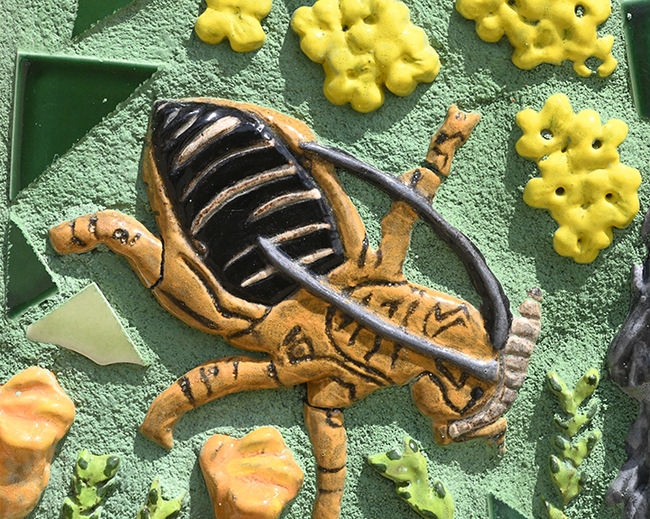
“I wanted to represent the insect scavenging for a waxworm,” Montes related. “I wanted to show that this insect appears aggressive, but also to grant visual diversity within the insect activity throughout the mural. Although many would think that the potato bug is big, clunky, and serves no purpose other than to scare people, researching the insect gave me much more insight on the importance this insect has in the environment, especially in vineyards.”
Predator Mites. Fourth-year entomology major Amberly Hackmann said she was assigned predator mites, Typhlodromus pyri.She described the species as “a generalist predatory mite species native to several major fruit growing regions of the world including North America, Europe, and New Zealand. It is a commonly used biological control agent in orchards for the management of other pest mite species that feed on the leaves and alter the crop quality. I created this ceramic clay art piece of T. pyri enjoying the spoils of its latest conquest, a red spider mite who had been feeding on a cabernet leaf. Predatory mitesare translucent to pale yellow in color until they take their first meal. I painted the red swirl on the abdomen of the predatory mite to indicate the mite taking on the color of its prey.”
Western Flower Thrips. Kelly Amado's project focused the western flower thrips, Frankliniella occidentalis, which Professor Ullman researches. “I am a person who doesn't really know much about insects or do many arts or crafts,” Amado wrote. “I have no experience with how to paint, draw or make anything creative, but I always try my best to be creative…This insect is important because they are important pests that damage crops by feeding on the plant and laying eggs on it. They also transmit pathogenic viruses to some plant species. The design I am presenting is a grape cluster with a western flower thrips on top. I used the grape cluster mold to form the shape of the grapes. After creating the grape cluster, I started defining the grapes by adding little balls of clay. I used several techniques to build the insect and show the fringed wings that are characteristic. It is important to identify these insects and know their place in the environment as early in the season as possible in order to prevent too much damage.”
Virginia Creeper Leafhopper. Psychology major Kayla Cabanas depicted the Virginia creeper leafhopper, Erythroneura ziczac. “This species of leafhopper is an agricultural pest that is found in vineyards, like the vineyard that this mural is displayed in,” Cabanas wrote. “In vineyards, E. ziczac feeds on the leaves of grapevines, causing damage that can lead to loss of product and economic loss. E. ziczac is of great concern to those tending the vineyard, as chemical and biological control methods are often necessary to prevent leafhopper damage.”
“For this mural, I designed a piece that communicated the leaf damage that E. ziczac causes, as well as their small size,” Cabanas explained. “My piece features the stippling and discoloration of E. ziczac damage on a leaf, as well as E. ziczac in the lens of a magnifying glass. E. ziczac is small to the naked eye, but taking a closer look reveals its beautiful patterns and colors. My piece was created using clay and underglazes of various colors, with a clear glaze covering it. Participating in this project has been a memorable part of my college experience. I am grateful for the opportunity to combine insects and art, which are two of my favorite things.
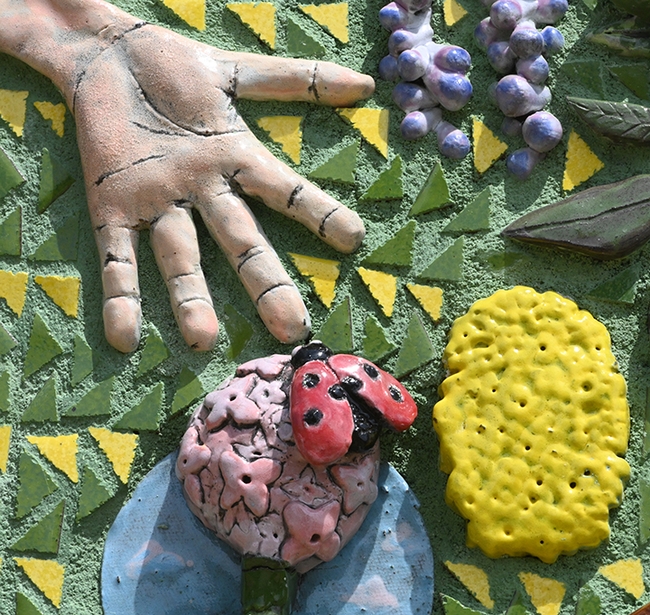
"In my design," Zhou explained, "I aimed to depict the harmonious interaction between C. californica and California buckwheat in wine yield, representing their interdependence and the beauty of their collaboration. The adjacent human is releasing the beetle to the buckwheat, representing the excellent relationship between humans and the California lady beetle. I aim to inspire people to contemplate the profound connections and interdependencies within ecosystems. The collaboration between C. california, humans, and California buckwheat serves as a reminder of the delicate balance and interconnectedness of all living beings. By celebrating the beauty of this symbiotic relationship, we can foster a deeper appreciation for nature's intricate tapestries."
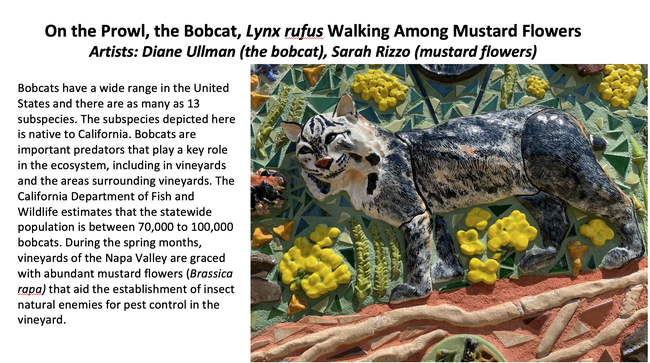
The Entomology 001 Professors
Diane Ullman. Ullman joined the UC Davis faculty in 1991. She launched the UC Davis Art/Science Fusion Program in September 2006; chaired the UC Davis Department of Entomology from 2004-2005; and served as an associate dean for undergraduate academic programs for the College of Agricultural and Environmental Sciences from 2005 to 2014.
A Fellow of both the American Association for the Advancement of Science (2014) and the Entomological Society of America (2011), Ullman was named the 2014 recipient of the ESA National Excellence in Teaching Award. She received the UC Davis Academic Senate's 2022 Distinguished Teaching Award for undergraduate teaching.
Emily Meineke. Meineke, who joined the UC Davis faculty in 2020, was recently named an Early Career Fellow of the Ecological Society of America and one of 12 UC Davis recipients of the prestigious Hellman Fellowships, an annual program supporting the research of early-career faculty. She was among the scholars and artists who helped spearhead the Harvard Museum of Natural History's “In Search of Thoreau's Flowers: An Exploration of Change and Loss," hailed as an examination of the natural world and climate change at the intersections of science, art and history. Meineke helped launch the project in 2017 when she was a postdoctoral fellow at the Harvard University Herbaria. The 648 plant specimens that Henry David Thoreau donated to the museum form the foundation of the exhibit, which opened to the public in May of 2022.
The Matthiasson Winery
Steve Matthiasson and Jill Klein Matthiasson, owners of Matthiasson Winery, 3175 Dry Creek Road, are active in the sustainable agriculture and local food movement. The winery is a James Beard Award six-time nominee and was named "Winemaker of the Year" by the San Francisco Chronicle and Food & Wine Magazine. For information on Matthiasson Winery, access the website at https://www.matthiasson.com.


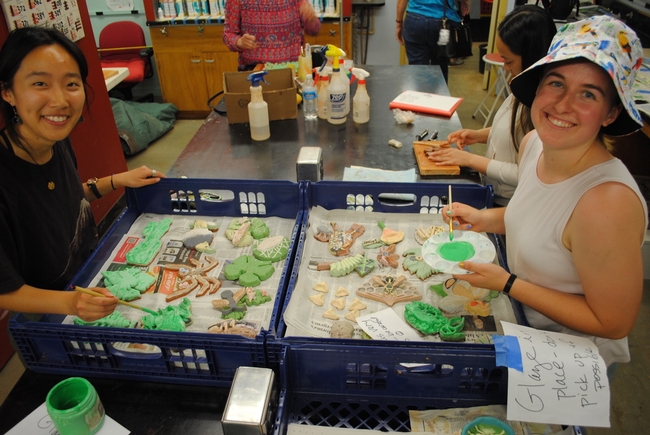
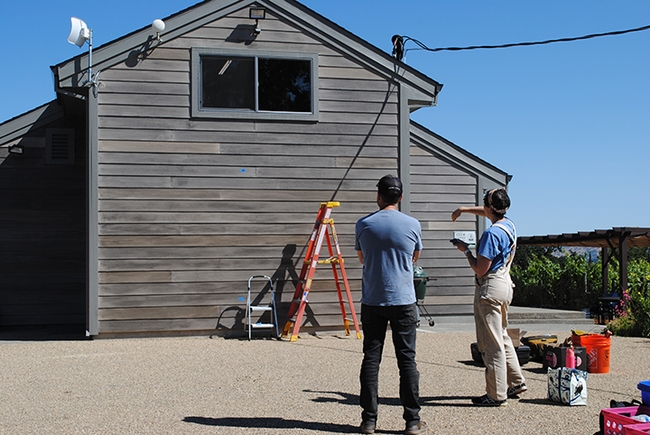
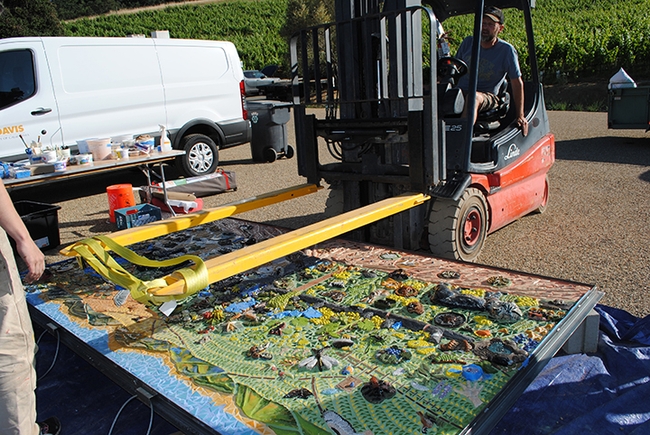
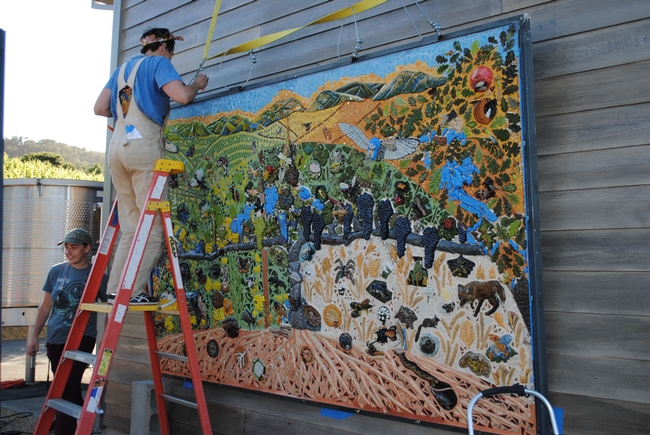
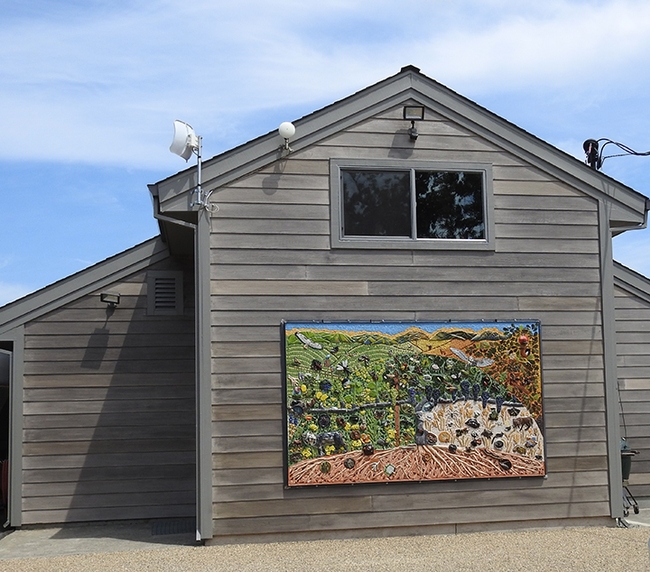
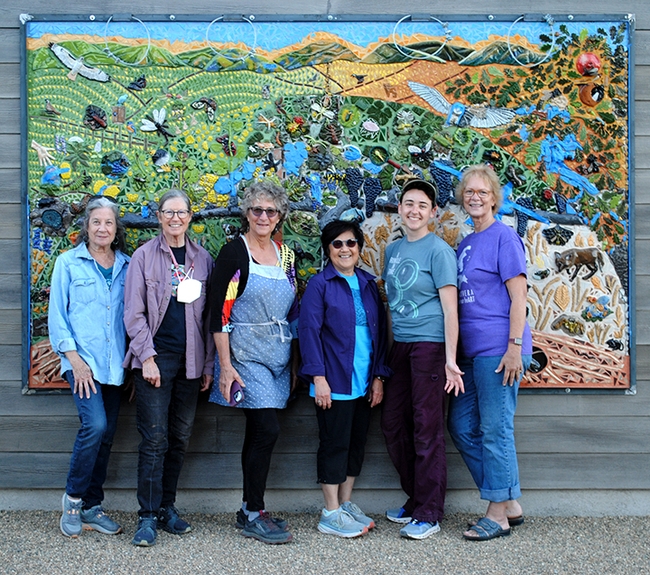
- Author: Kathy Keatley Garvey
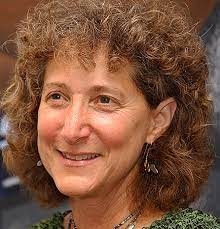
Distinguished professor Diane Ullman, former chair of the Department of Entomology and Nematology and co-founder of the UC Davis Art/Science Fusion Program, and urban landscape entomologist/assistant professor Emily Meineke are co-teaching Entomology 1 (ENT1)--and their class project is to create a mural at the Napa winery. "We did a community build there for their friends and employees," Ullman said today.
The mural will showcase some 80 different insects that inhabit the vineyard.
An article in napavalleyfocus.substack.com, titled "Unveiling the Hidden World: Napa's Matthiasson Winery and UC Davis Collaborate to Illuminate the Power Insects," quotes the UC Davis entomologists:
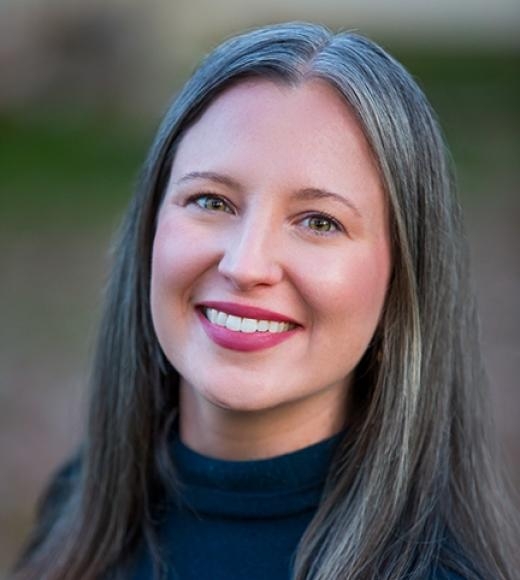
Ullman: “The mural will serve not only as an artistic display of insects and their environments but also as an opportunity for students and viewers to recognize the positive contributions these creatures make,” Ullman said. “As the process for our students involves understanding the intricate details of body form and function along with an organism's role in its natural environment, a deep understanding is crucial.”
In addition to insects, the mural will depict quail, squirrels, spiders, worms, flowers, valley oak leaves, plants, and yeast. Community members are also participating in the project.
"The entire process aligns with the Matthiassons' mission of promoting the benefits of organic viticulture," reporter Tim Carl wrote in the Napa article. "Steve and Jill Matthiasson, who have been actively involved at UC Davis for decades, have been pioneers in advocating for organic farming. Their approach extends beyond grape cultivation and winemaking, encompassing initiatives that enhance wine quality, combat climate change, and foster healthy environments and communities."
The family-owned Matthiasson Wines is located at 3175 Dry Creek Road, Napa. The winery is a James Beard Award six-time nominee and was named "Winemaker of the Year" by the San Francisco Chronicle and Food & Wine Magazine.
See more at napavalleyfocus.substack.com
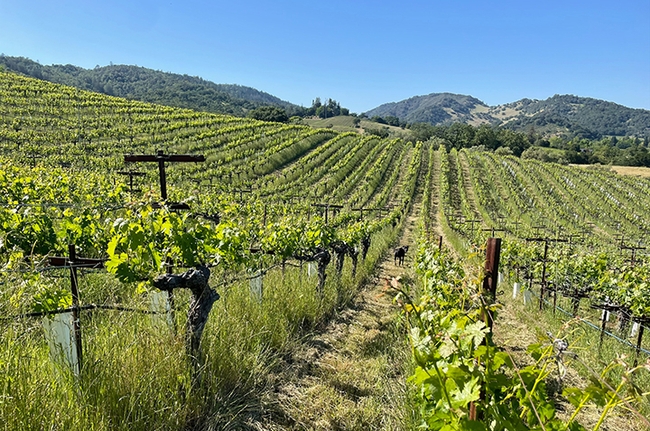
- Author: Kathy Keatley Garvey
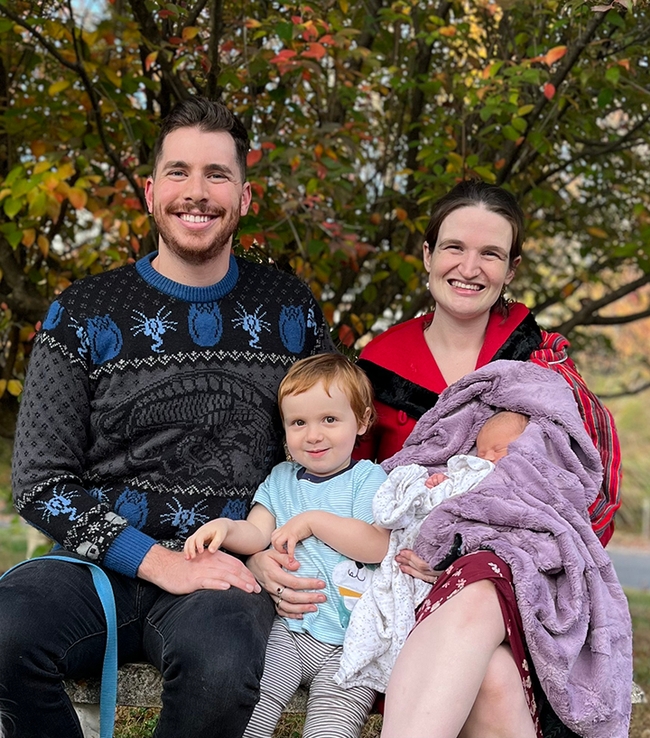
She's been there. She's doing that.
Charlotte is a wife, a mother of two children under age three with no outside childcare, a research fellow at the Smithsonian National Museum of Natural History (NMNH), and a talented scientific illustrator and creative artist.
She moved cross-country during the COVID-19 pandemic in 2020 to finish her dissertation, all the while tackling multiple obstacles and health issues.
It's been a 5-year whirlwind: marriage in 2018 to artist George Albert, birth of their son Griffin in April 2020, and birth of their daughter Marceline “Marcy” in October 2022.
“I truly commend Charlotte for her recent publication of the first chapter of her dissertation," said Diane Ullman, UC Davis distinguished professor and a former chair of the Department of Entomology and Nematology. “She has overcome many obstacles, and I deeply respect her capacity to balance the science and research she loves, with being a mother of two, a wife and a devoted daughter.”
Now a resident of Silver Spring, Md., Charlotte studies systematics, phylogenetics, insect biotechnology, genomics, speciation, and macroevolution, among other fields. She enrolled in the UC Davis entomology graduate program in 2015, and anticipates receiving her doctorate in "no later than June 2023—hopefully before."
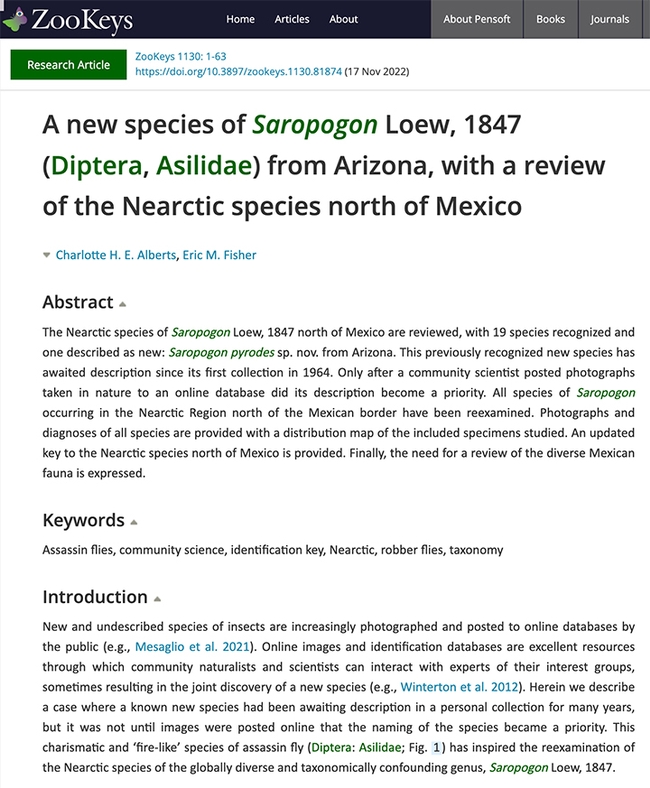
“Charlotte is a fantastic artist, as well as an excellent scientist,” Ullman said. I look forward to watching her as she finishes her Ph.D. and develops her career. My own daughter was born the year after I finished my Ph.D., and I certainly remember the challenge of being a mother, a wife, and taking care of aging parents while working to establish an academic career."
“Without a doubt," Ullman said, "I would not change a thing—I feel enormously grateful for the joy of my family, and for having the opportunity to simultaneously enjoy a full career in the sciences, as well as connecting art and science.”
Alberts' paper, “A New Species of Saropogon Loew, 1847 (Diptera, Asilidae) from Arizona, with a Review of the Nearctic Species North of Mexico,” is her first journal publication.
“This new species of Saropogon (family Asilidae) was a known new species when it was collected for the first time in 1964,” Alberts said. “It wasn't until a community scientist posted pictures of this beautiful ‘fire-like' species to iNaturalist and BugGuide and requested identification that the description of this new species as well as a review of the entire Nearctic Saropogon, north of Mexico, became a priority. Publications like this are a great example of why community scientist and scientist engagement are so important. Websites like iNaturalist and BugGuide are an incredible resource for both and facilitate the finding and describing of new species.”

Alberts praised the work of macro photographer Jeff Gruber of Madison, Wisc., a regular contributor to BugGuide and iNaturalist who provided the Saropogon pyrodes image in ZooKeys, and UC Davis alumna Keely Davies, the illustration. Davies (biognome.art on Instagram) holds a bachelor's degree in animal biology (2019) and a degree in scientific illustration (2021) from California State University, Monterey Bay.
Charlotte's family and friends on Facebook lauded her newly published research: “Wow, what a year you are having. Congratulations!” and “You are just killing it, woman!” and “YASSS, asilid queen! Congrats!”
A native of Plainfield, N.H, Charlotte is a 2015 graduate of St. Lawrence University, Canton, N.Y., where she majored in conservation biology and developed an interest in assassin flies--and in celebrating World Robber Fly Day every April 30.
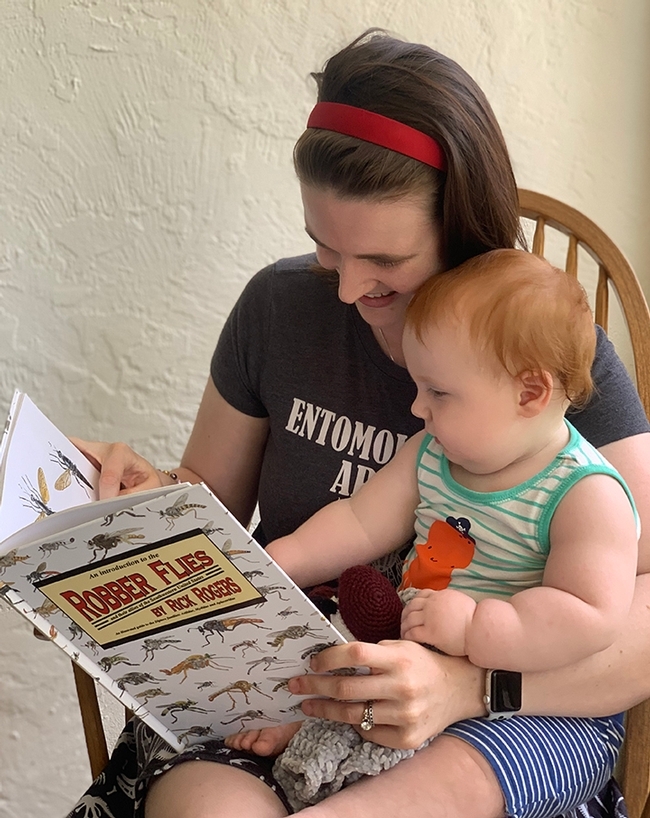
Bohart Museum. At UC Davis, she worked on the identification and database of the Asilidae collection at the Bohart Museum of Entomology from August 2015 until June 2021, while also engaged in numerous art projects and serving a year as secretary of the Entomology Graduate Student Association.
Charlotte has collected insects in 16 states and four countries, including Belize, Namibia, and Sweden. She presented a virtual seminar on “Asilidae of Belize” at the 2021 Entomological Society of America meeting.
How difficult is it to juggle so many roles? “I would be lying if I said it was easy,” Alberts said. “Being a mom, a wife, and a graduate student is a significant challenge. Balancing work and life is a skill that no one can teach you and takes a lot of trial and error. Thankfully, with the support and patience from my principal investigator (Diane Ullman), my advisor (UC Davis distinguished professor Rick Karban), my thesis committee (Ullman, research advisor Torsten Dikow of NNMH, and Jason Bond, Evert and Marion Schlinger Endowed Chair in Insect Systematics, Department of Entomology and Nematology, and associate dean, College of Agricultural and Environmental Sciences), my husband, and family, I have been able to continue to work on my PhD through a pandemic, multiple health issues, moving across the country, and having two children. Though being a mom and a graduate student is a lot of work, and exhausting, I wouldn't change it for the world. My family brings so much joy to my life and fuels me to push forward, one step at a time!”
More Flexibility. Alberts noted that being a graduate student “has allowed me more flexibility as a working mom to also care for my children than a typical 9 to 5 job. Instead of putting the kids in daycare, I have chosen to work during nap times, after and before bedtime, for chunks during the day when my husband can take over, weekends, and during my son's preschool, twice a week. Sometimes it's challenging to not have the same routine every day. and there are never enough hours in a day, but I do get to be a part of my children's childhoods, and I am forever grateful for that!”
“Being a mom and a graduate student means that I am learning every day how to be more creative and flexible with my time,” she said. “I've learned how to modify my workspace to be available to my children. One of the many ways that having children has changed me is that I have less anxiety about my work. I used to sit on an email sometimes for days because of the fear of not being good enough or doing something wrong. Or sometimes, I wouldn't ask for help with something or ask how something was done because of the fear of being judged for not being able to do it myself. Since having my children, I've had to push my anxieties and fears aside because I simply don't have the time I used to have to worry about such things. I've learned to accept help from others and that I am not expected to know everything, especially in graduate school.”
Alberts remembers how much she liked interning at NMNH in the summer of 2014 and working with Dikow on identifying specimens of Asilidae to genus. She then won a graduate student fellowship (July-September 2016) at NMNH; Dikow served as her advisor. "I hope to do my postdoctoral fellowship there," she said.
Meanwhile, Charlotte Alberts is geared toward finishing her dissertation while balancing her work-home life. “My family brings so much joy to my life,” she reiterated, “and fuels me to push forward, one step at a time!”
